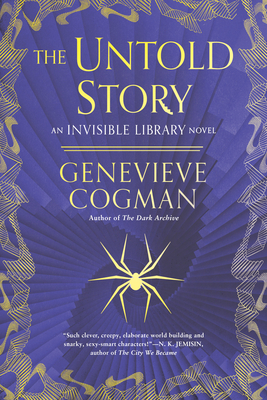 The Untold Story (The Invisible Library #8) by Genevieve Cogman
The Untold Story (The Invisible Library #8) by Genevieve Cogman Format: eARC
Source: supplied by publisher via Edelweiss
Formats available: paperback, ebook
Genres: fantasy, gaslamp, historical fantasy, steampunk, urban fantasy
Series: Invisible Library #8
Pages: 352
Published by Ace on December 9, 2021
Purchasing Info: Author's Website, Publisher's Website, Amazon, Barnes & Noble, Kobo, Bookshop.org
Goodreads
In this thrilling historical fantasy, time-traveling Librarian spy Irene will need to delve deep into a tangled web of loyalty and power to keep her friends safe.
Irene is trying to learn the truth about Alberich-and the possibility that he's her father. But when the Library orders her to kill him, and then Alberich himself offers to sign a truce, she has to discover why he originally betrayed the Library.
With her allies endangered and her strongest loyalties under threat, she'll have to trace his past across multiple worlds and into the depths of mythology and folklore, to find the truth at the heart of the Library, and why the Library was first created.
My Review:
Heist and caper stories often open at the close, meaning that the reader – or viewer in the case of TV and movies – comes into the story as the caper either appears to be succeeding or failing. Then the story jumps back to the beginning and we get to see how the situation and characters got into the rather large pickle that they were in when we joined the action.
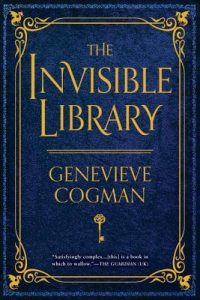 This final book in the Invisible Library series closes at the open. When we first met Irene Winters all the way back in the first book, also titled The Invisible Library, as far as the existence of the Library and Irene’s place in it were concerned, the story is in medias res, the middle of the matter.
This final book in the Invisible Library series closes at the open. When we first met Irene Winters all the way back in the first book, also titled The Invisible Library, as far as the existence of the Library and Irene’s place in it were concerned, the story is in medias res, the middle of the matter.
As the story has progressed, many of Irene’s adventures have been heists or capers or both, as she generally finds herself and her friends and companions not just jumping from the frying pan into the fire, but in messes where it’s frying pans and fires all the way down.
But part of the reason for all the perils that Irene finds herself facing is that the situation between the worlds is deteriorating. The Library and its librarians guard the balance between the absolute order of the Dragons and the utter chaos of the fae.
Because the worlds in the center, the worlds that have enough chaos to prevent tyranny and allow for growth, but that also have enough order for laws and organizations and society in general to manage to function, are the only worlds on which humans thrive.
And all the librarians, except for Irene’s former apprentice, the Dragon Prince Kai, and her current apprentice, the fae bibliophile Catherine, have been human.
Someone is eliminating worlds at the far ends of the spectrum, both worlds of extreme order and worlds of absolute chaos. Someone wants to destabilize the Library and the fragile peace it brokers between the Dragons and the Fae.
In order to figure out who or what is leading their entire system into destruction, Irene will have to go all the way to the beginning of things. To the lost myths of the foundation of the Library itself. And to the truth of her own origins.
Escape Rating A: The madcap misadventures of librarian Irene Winters come to a rollicking conclusion in this final book in the epic Invisible Library series.
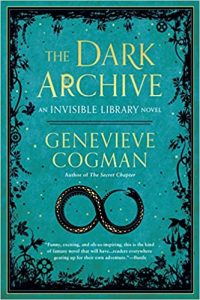 While this series has been very much one caper after another, the lighthearted tone of the series has slipped towards a more serious turn as it has continued. After Irene’s discovery at the end of the previous book, The Dark Archive, that she’s not the biological daughter of the two librarians who raised her, the foundations of Irene’s world have taken more than a bit of a beating.
While this series has been very much one caper after another, the lighthearted tone of the series has slipped towards a more serious turn as it has continued. After Irene’s discovery at the end of the previous book, The Dark Archive, that she’s not the biological daughter of the two librarians who raised her, the foundations of Irene’s world have taken more than a bit of a beating.
It’s not just that her adoptive parents lied to her – along with the collusion of the Library itself, but that while Irene may not exactly be the Library’s equivalent of Luke Skywalker, her sperm donor is very definitely the Library’s version of Darth Vader – and he is her father, a revelation that lands with the same “THUD” that it does for Luke in The Empire Strikes Back.
Vader is, at least at that point in the series, exactly the villain that everyone thinks he is. Alberich’s status is a bit less clear. Not that he hasn’t committed a lot of terrible acts, but that the reason behind those terrible acts is not nearly so simple – or so black and white – as Vader’s turn to the Dark Side.
Just as Irene’s discovery of her parentage – and the Library’s role in covering it up – lead to questions that no one wants to answer, so too do her questions about the true origin of the Library itself. A truth that is shrouded in myths and legends that no one really wants to examine.
But that’s what Irene does, because that’s who she is. Librarians don’t know everything. What librarians know, in real life as well as in fantastic stories like this one, is how to find things out. Even things that no one wants found. Even things that will shake the foundations of the world.
The Untold Story has been untold for centuries because too many beings have a vested interest in NOT exposing the truth at the heart of their world. But Librarian Irene Winters tells that story anyway. And it’s the wildest ride she’s ever taken us on.
This is an intensely compelling ending to a fascinating saga. If you haven’t yet visited the Invisible Library, start at the beginning and settle in for a wild, woolly and wonderful ride.

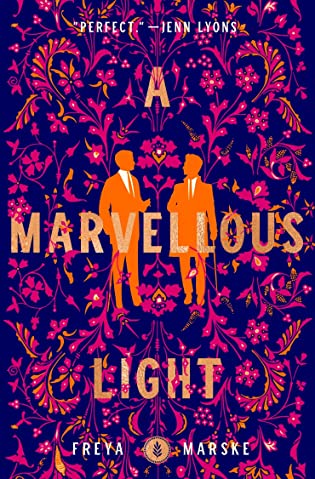 A Marvellous Light (The Last Binding, #1) by
A Marvellous Light (The Last Binding, #1) by 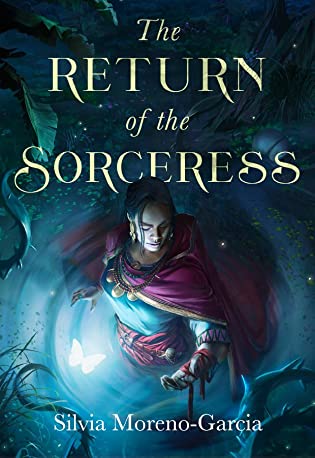 The Return of the Sorceress by
The Return of the Sorceress by 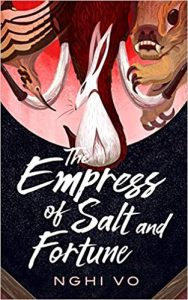 Escape Rating A-: At first, very much at first, this story reminded me a lot of
Escape Rating A-: At first, very much at first, this story reminded me a lot of 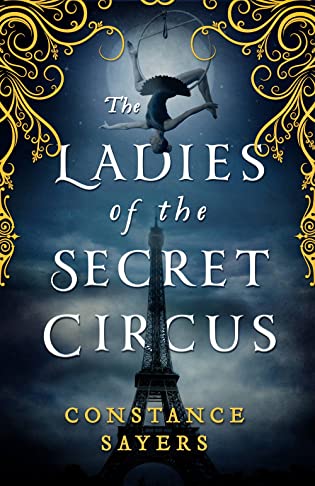 The Ladies of the Secret Circus by
The Ladies of the Secret Circus by 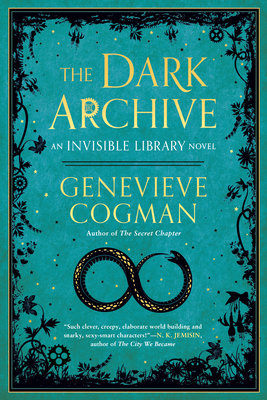 The Dark Archive (The Invisible Library, #7) by
The Dark Archive (The Invisible Library, #7) by 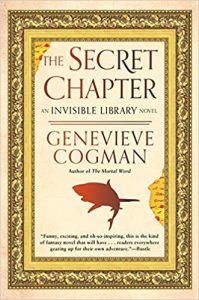 Escape Rating B: This turned out to be more of a mixed-feelings read than I was expecting. Because I absolutely adore this series and have been waiting all year for this book, so I expected to fall into instantly and love every minute of reading it.
Escape Rating B: This turned out to be more of a mixed-feelings read than I was expecting. Because I absolutely adore this series and have been waiting all year for this book, so I expected to fall into instantly and love every minute of reading it.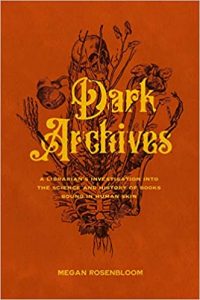 One final note, when I saw the title of this entry in the series, it sounded familiar – only because the title is oh-so-similar to another book that came out this fall, written by a real-world librarian and archivist. That similarly titled but not similar in subject book is
One final note, when I saw the title of this entry in the series, it sounded familiar – only because the title is oh-so-similar to another book that came out this fall, written by a real-world librarian and archivist. That similarly titled but not similar in subject book is 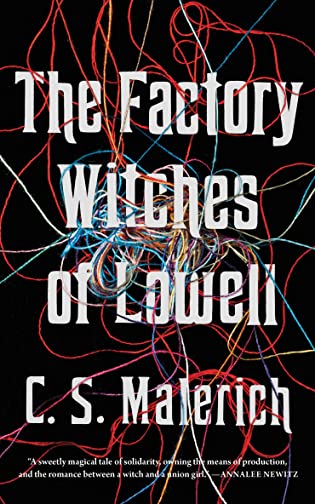 The Factory Witches of Lowell by
The Factory Witches of Lowell by  Westside Saints by
Westside Saints by 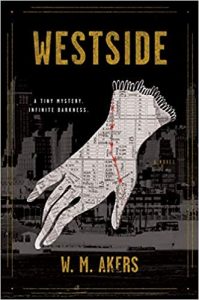 Escape Rating A: I loved the first book, Westside, and loved this one every bit as much. After
Escape Rating A: I loved the first book, Westside, and loved this one every bit as much. After 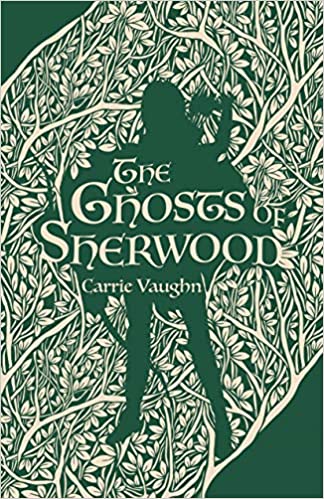 The Ghosts of Sherwood (The Robin Hood Stories, #1) by
The Ghosts of Sherwood (The Robin Hood Stories, #1) by 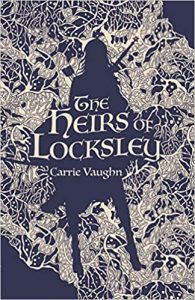 But the story also deals with the politics of the country as one king’s reign is about to end and his heir is a child of nine. That forces are jockeying for power, and that Robin will have influence and could possibly be influenced is a part of his times.
But the story also deals with the politics of the country as one king’s reign is about to end and his heir is a child of nine. That forces are jockeying for power, and that Robin will have influence and could possibly be influenced is a part of his times.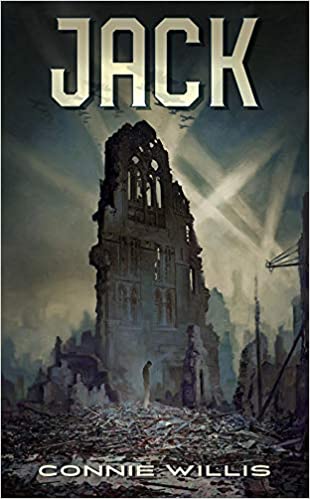 Jack by
Jack by 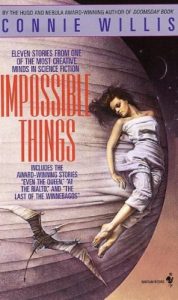 I didn’t catch that this was a reprint when I downloaded it from NetGalley a few weeks ago. Upon further investigation, I discovered that I read this one, a long, long time ago. It’s part of Connie Willis’ marvelous short story collection,
I didn’t catch that this was a reprint when I downloaded it from NetGalley a few weeks ago. Upon further investigation, I discovered that I read this one, a long, long time ago. It’s part of Connie Willis’ marvelous short story collection, 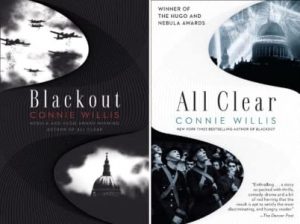 I don’t think it’s any accident that there’s a “bodysniffer” every bit as successful as Jack Settle over in Whitechapel. He’s probably named Jack, too.
I don’t think it’s any accident that there’s a “bodysniffer” every bit as successful as Jack Settle over in Whitechapel. He’s probably named Jack, too.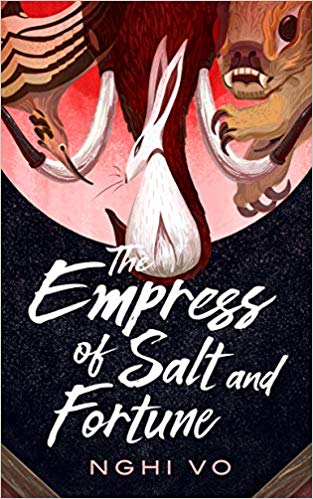 The Empress of Salt and Fortune (Singing Hills Cycle #1) by
The Empress of Salt and Fortune (Singing Hills Cycle #1) by